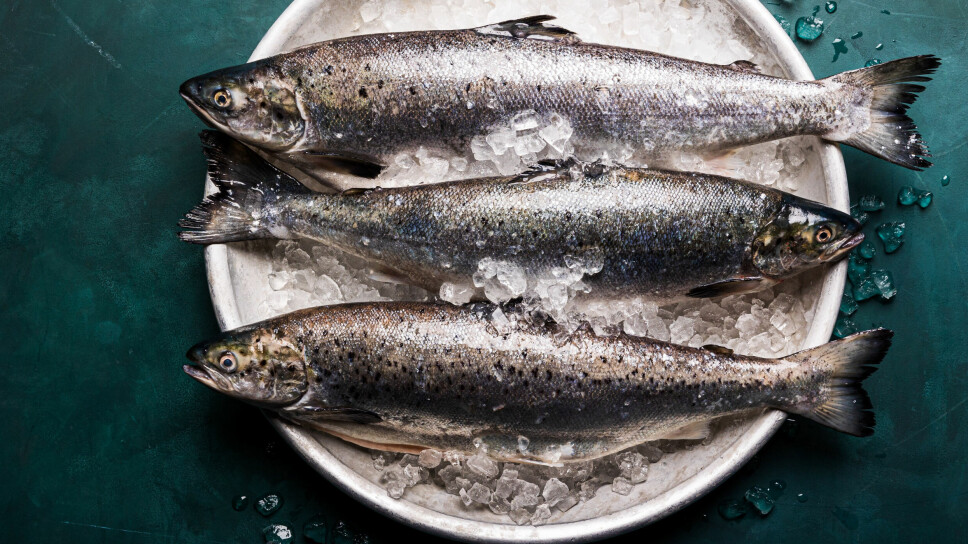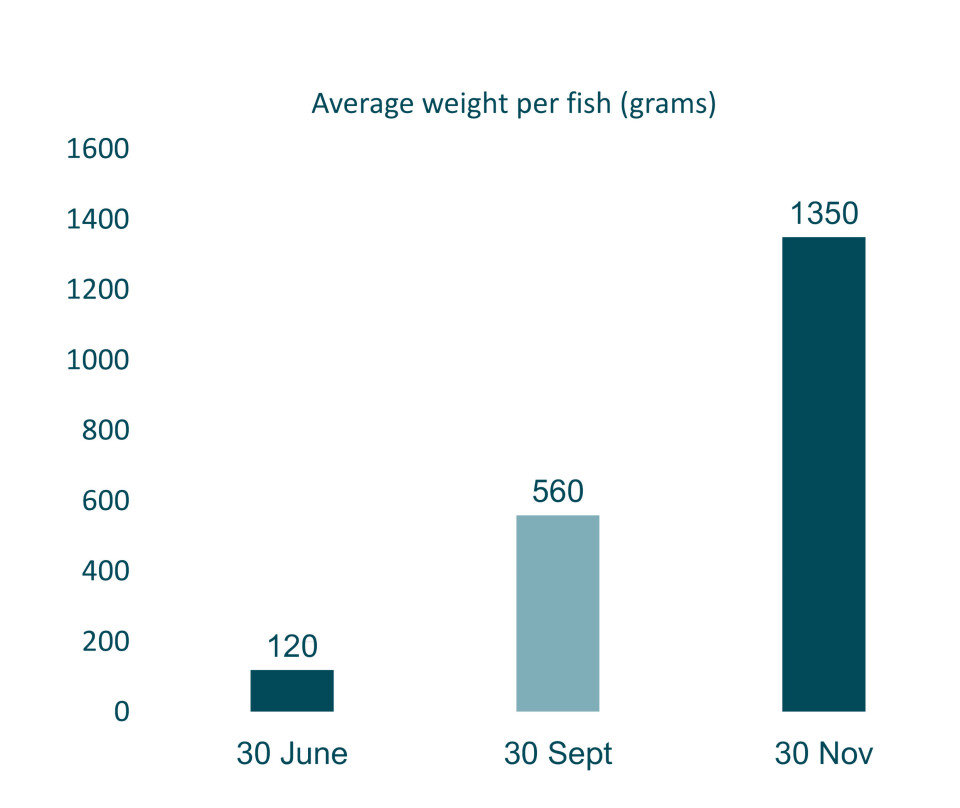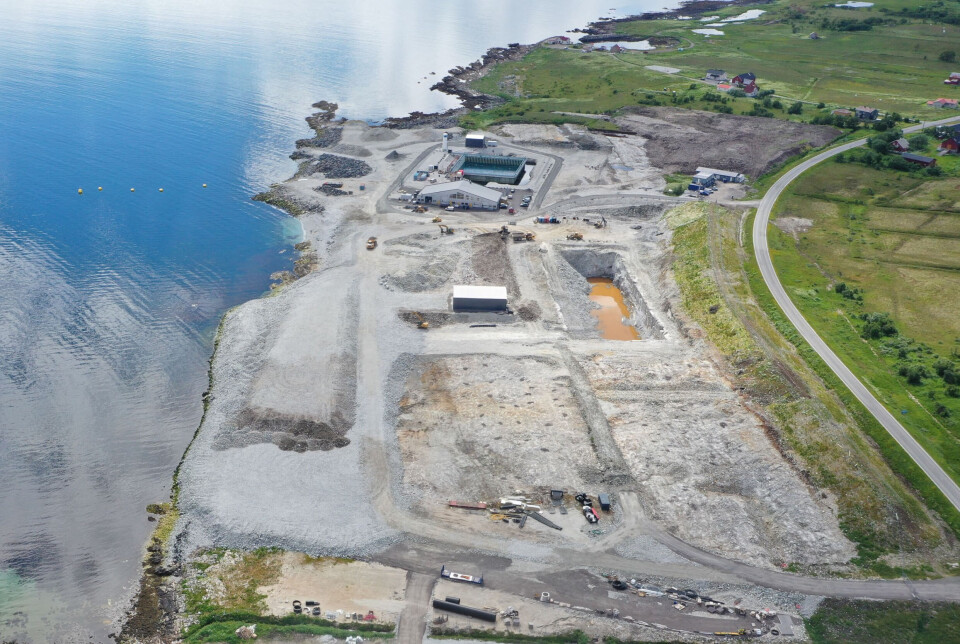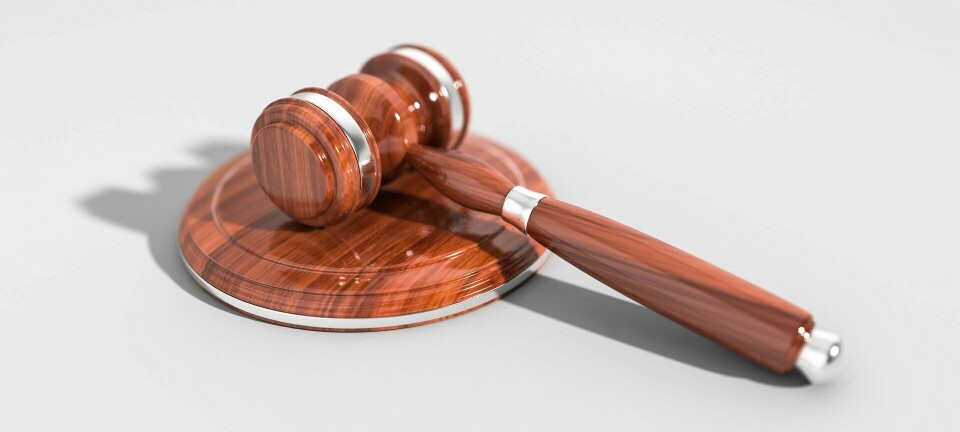
Salmon growing well in Andfjord’s
low-energy on-land farm
The company reports continued good biological conditions in the company's first pool at Kvalnes, Andøya, Norway, and the survival rate is still high.
As of 30 November 2022, the average weight of the salmon was 1,350 grams, an increase in weight from 560 grams at the end of September. The average weight of the smolts was 120 grams when stocked on 25 June this year.
The survival rate of the salmon remains high. As of 30 November 2022, the survival rate was 98.7%. After 99.8% had survived the stocking in June, survival was 99.3% as of 30 September.
“There will always be some fish mortality as the weakest individuals must be removed from the pool, at the same time that the company regularly takes out fish to carry out investigations of fish health,” the company writes in its third quarter report.
Natural habitat
Chief executive Martin Rasmussen pointed out that fish health, growth and survival rate are linked.
“The basis is strong biological conditions and a pool ecosystem that is as close as possible to the salmon’s natural habitat in the sea outside Andøya,” he said.

Energy consumption at Andfjord Salmon’s Kvalnes pool is within the company’s target of 1 kwh/kg of salmon produced.
“The low energy consumption and associated costs emphasise the attractiveness of our flow-through system,” said Rasmussen.
Andfjord Salmon uses water from a depth of approximately 40 metres below sea level for its flow-through technology solution. The water is changed 15-17 times every 24 hours. The company’s pools, which are excavated into the ground so they are below sea level, are square with the intention of recreating a cross-section of the Gulf Stream. At harvest weight, the density in the pools will be around 35-40 kg/m³.
Andfjord Salmon maintains its goal of carrying out the first harvest in mid-2023.
Phase 2
In parallel with the first production cycle at Kvalnes, Andfjord Salmon is currently working on detailing the most cost-effective development process for Kvalnes Phase 2, which aims to increase the production volume at Kvalnes from 1,000 to 19,000 tonnes (head-on gutted).
“The company is about to enter the final phase of contract discussions with suppliers about the most cost-effective plan for development. Andfjord Salmon will eventually invite the shareholders to a capital market update to present the development plan and timeline for Kvalne's phase 2,” the company wrote.
Andfjord Salmon is in the middle of its first production cycle, which means it is not yet generating income. The company’s first operating income will be generated after the first harvest.
The company had an operating loss of NOK 14.7 million (£1.13 m) in the third quarter of the year, compared to a loss of NOK 11.4 m in the same quarter last year.
At the end of September 2022, Andfjord Salmon had cash and deposits of approximately NOK 117 m. This figure does not include a remaining loan facility of NOK 5 m, an unused credit facility of NOK 20 m or NOK 5 m in unpaid grants.























































